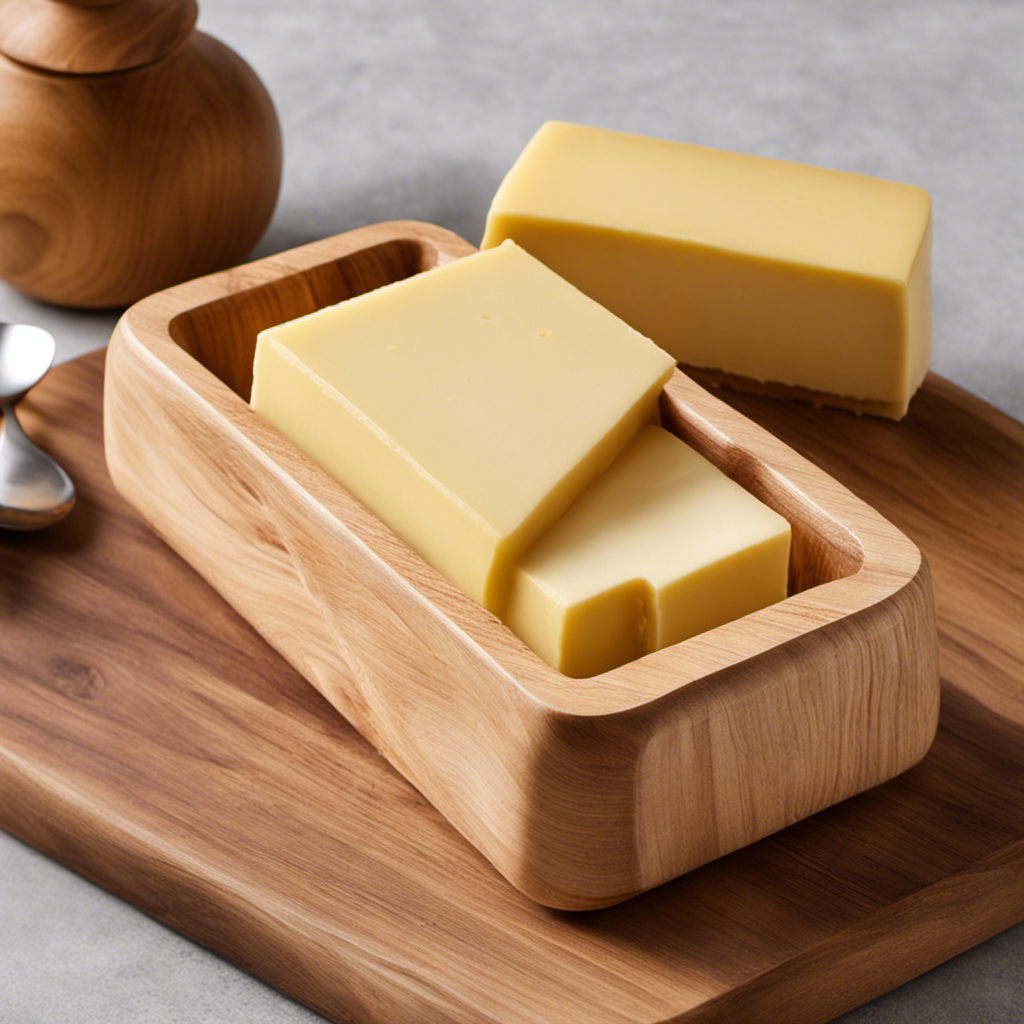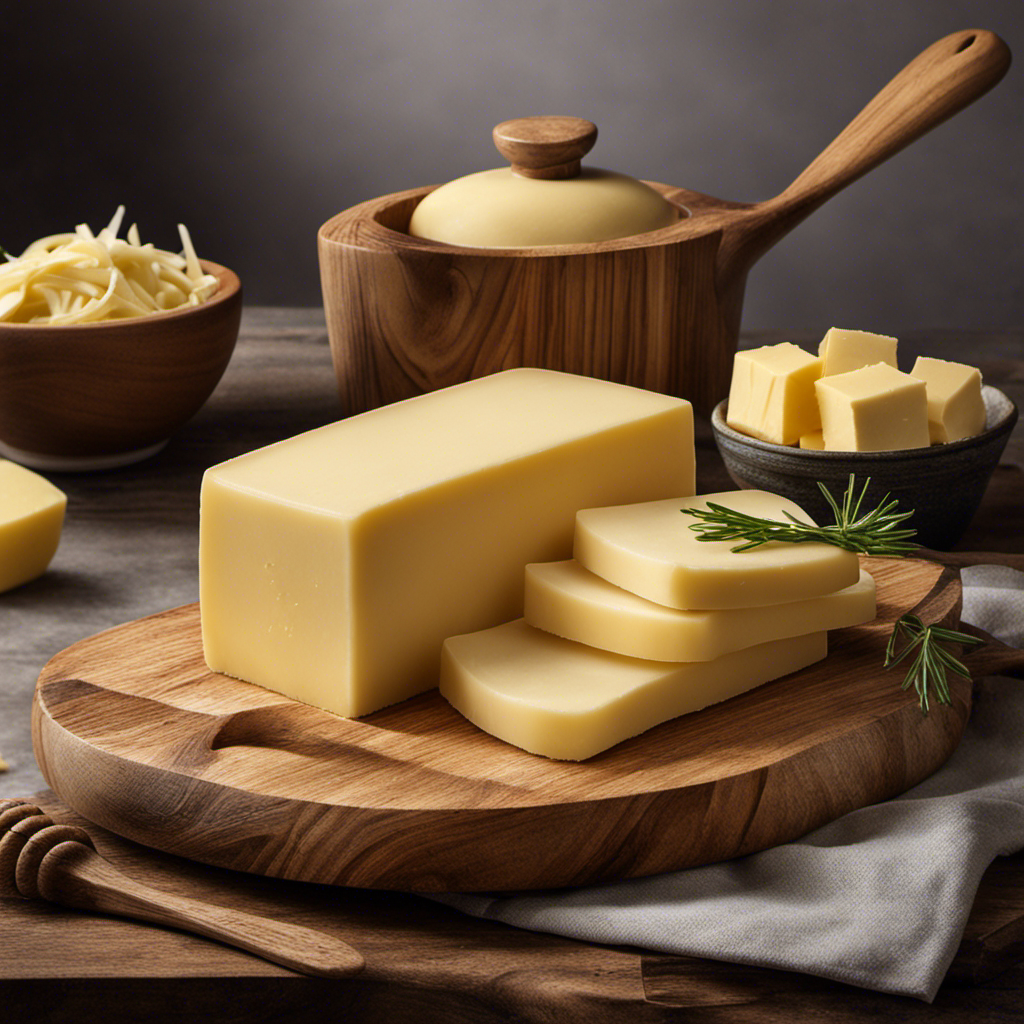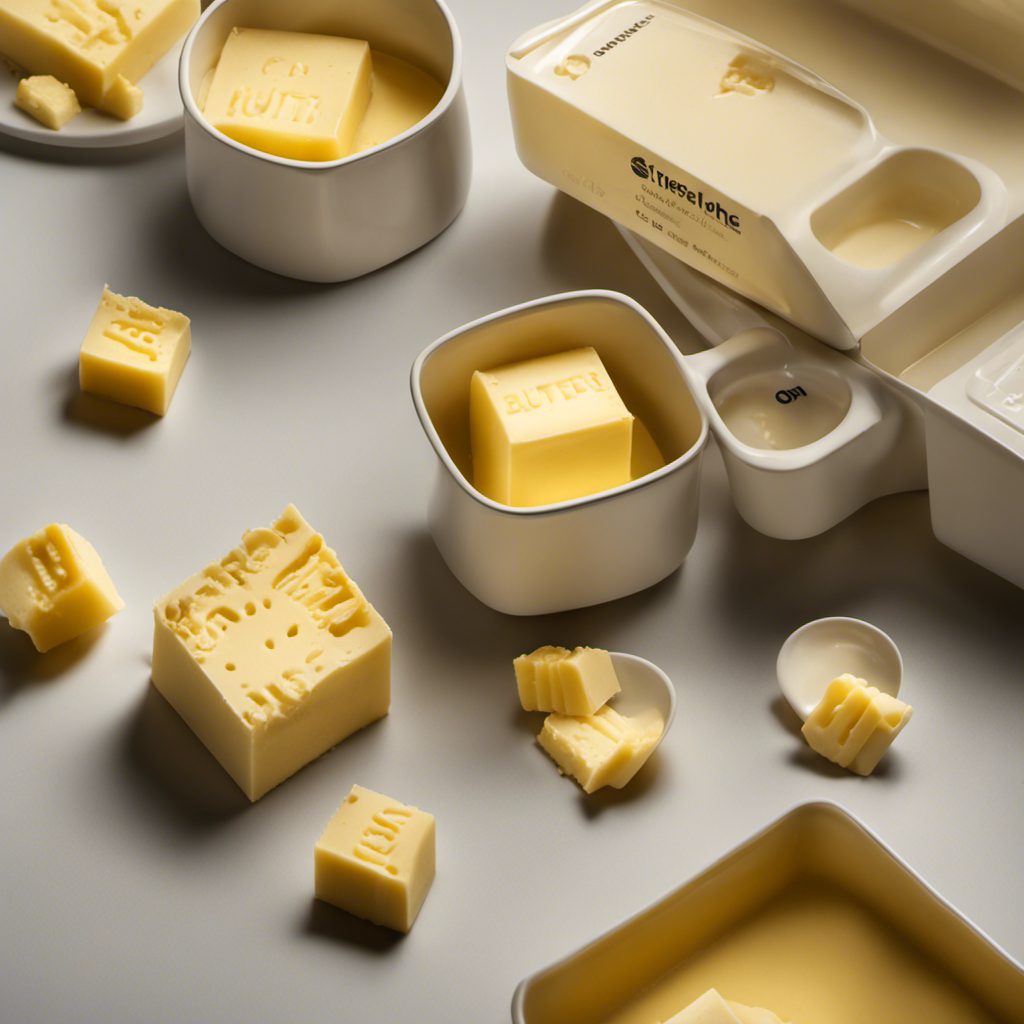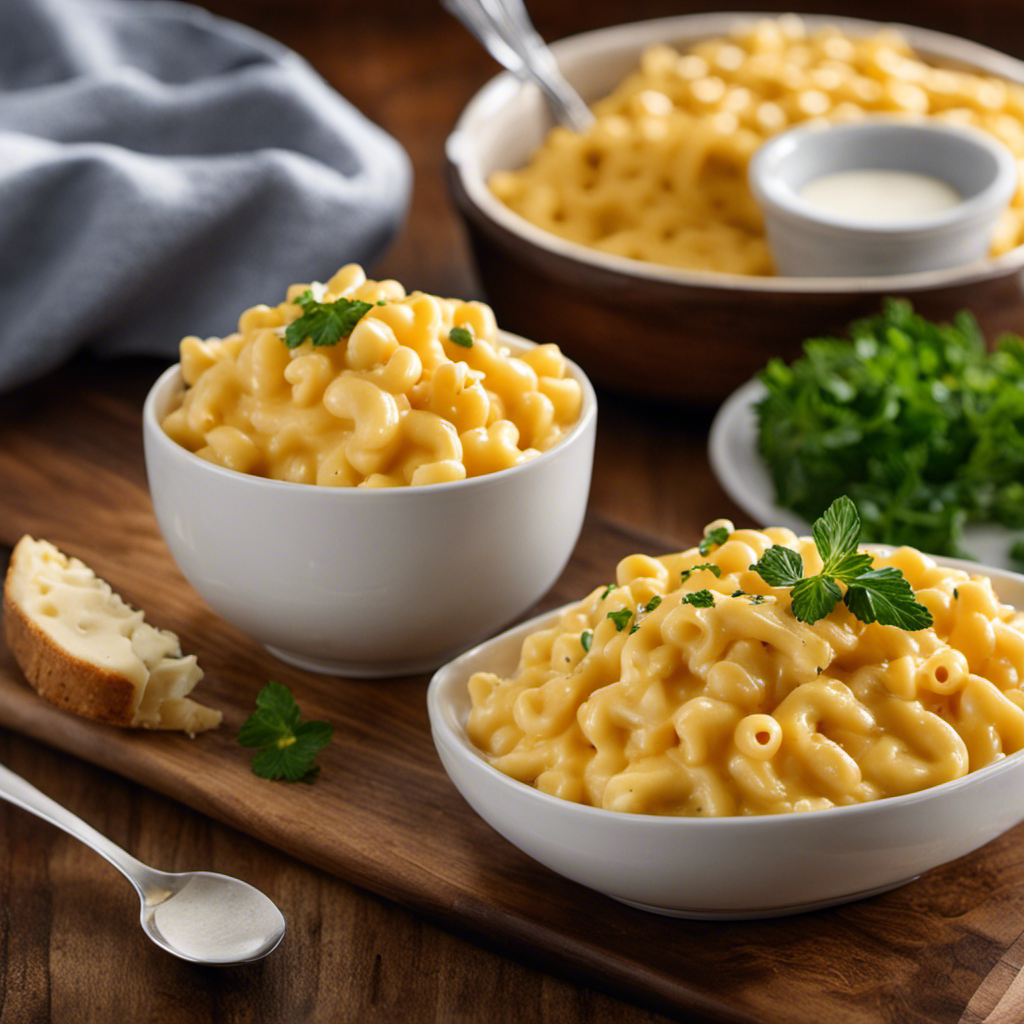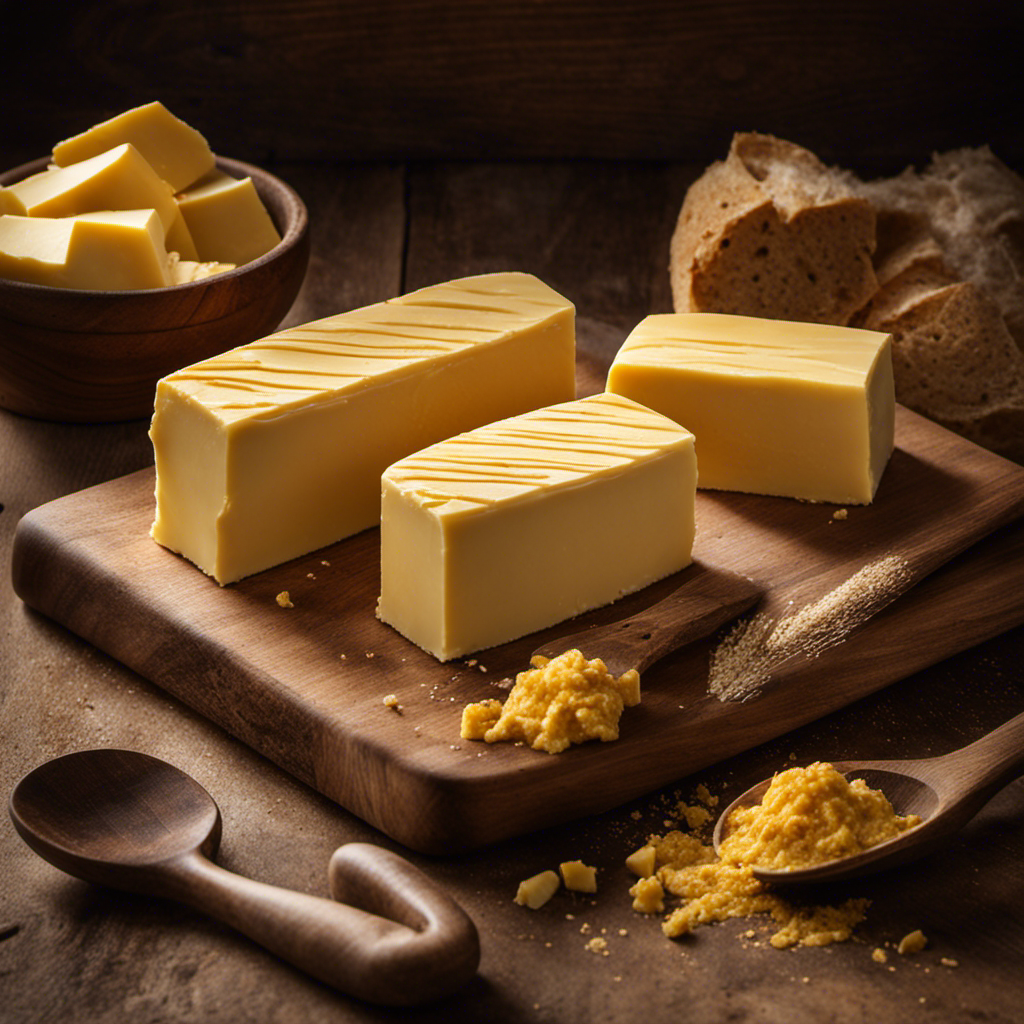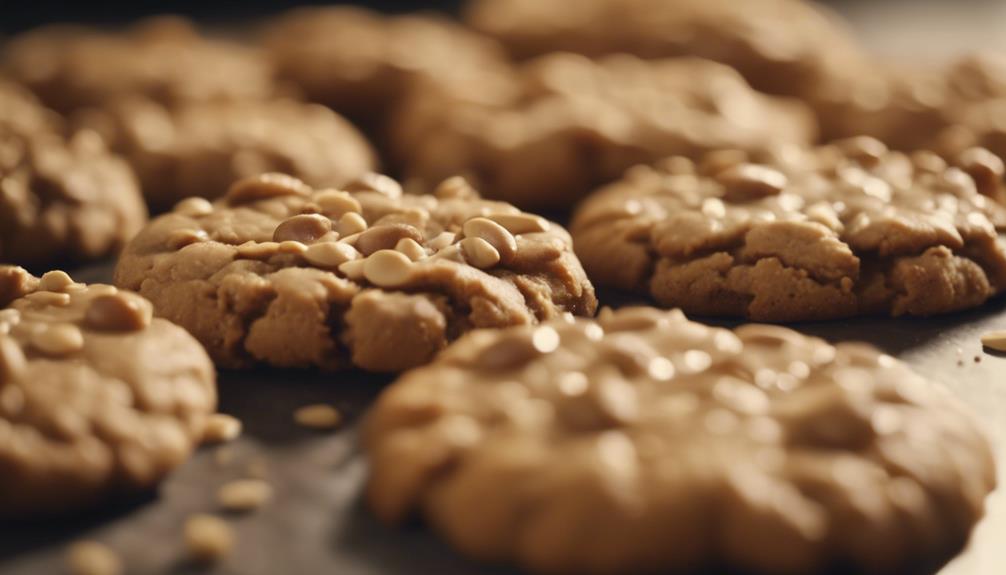As the saying goes, “Butter makes everything better.” However, when it comes to measuring butter, it can be a little confusing. That’s why I’m here to explain it to you.
In this article, I’ll explain how to convert sticks of butter to tablespoons, the standard measurement for butter in recipes, and provide a handy conversion chart. So, if you’ve ever wondered how many tablespoons are in one stick of butter, keep reading.
Get ready to master the art of butter measurement like a pro!
Key Takeaways
- A stick of butter typically measures 1/2 cup or 8 tablespoons.
- The equivalent measurements for butter in different countries are: 8 tablespoons in the United States, 10 tablespoons in the United Kingdom, and 9 tablespoons in Australia.
- Measuring butter by weight provides more accuracy, while measuring by volume is more convenient for home bakers.
- Accurate conversion of butter measurements ensures precise and successful baking.
Understanding Butter Measurements
Do you know how many tablespoons are in a stick of butter? Well, let me enlighten you!
When it comes to converting butter measurements, it’s crucial to understand the accurate conversions. A stick of butter typically measures 1/2 cup or 8 tablespoons.
This information is vital for any baking or cooking enthusiast, ensuring precise measurements and delicious results. Measuring butter accurately can make a significant difference in the final outcome of your recipe.
Whether you need to soften butter for a fluffy cake or melt it for a smooth sauce, knowing the exact amount in tablespoons can save you time and effort.
Converting Sticks of Butter to Tablespoons
To convert a stick of butter into tablespoons, you’ll need to multiply by the conversion factor. Butter measurements can differ across countries, so it’s important to know the equivalent measurements when cooking or baking. Here is a table showcasing the equivalent measurements for butter in different countries:
| Country | Stick of Butter (in tablespoons) |
|---|---|
| United States | 8 tablespoons |
| United Kingdom | 10 tablespoons |
| Australia | 9 tablespoons |
Converting butter measurements is essential for following recipes accurately. Whether you’re making cookies, cakes, or savory dishes, knowing the correct amount of butter to use is crucial for achieving the desired outcome. Now that we’ve learned how to convert sticks of butter into tablespoons, let’s dive into the standard measurement for butter in recipes.
The Standard Measurement for Butter in Recipes
When following a recipe, it’s important to know the standard measurement for butter. Using accurate measurements in baking is crucial because it can greatly affect the outcome of your baked goods.
One of the common challenges when measuring butter is the difference between measuring it by weight versus volume. In some recipes, butter is measured in weight, such as grams or ounces, while in others, it is measured in volume, such as cups or tablespoons.
Measuring by weight provides more accuracy as butter can vary in density, especially when it is softened or melted. On the other hand, measuring by volume can be more convenient and accessible for home bakers who may not have a kitchen scale.
Understanding these differences will help you achieve consistent and delicious results in your baking. Speaking of measurements, let’s now dive into how many tablespoons are in one stick of butter.
How Many Tablespoons Are in One Stick of Butter
Knowing the equivalent amount of tablespoons in one stick of butter is essential for accurately measuring your ingredients in baking. Converting butter measurements can be confusing, especially with the different packaging options available.
In the United States, butter is commonly sold in sticks, usually wrapped in wax paper or foil, with each stick typically weighing 4 ounces or 113 grams. One stick of butter is equivalent to 8 tablespoons or 1/2 cup. This measurement is standard across most recipes and is a convenient way to portion out butter when needed.
However, it’s important to note that in some countries, butter may come in different packaging, such as blocks or tubs, and the measurements may vary. So, always check the packaging or consult a reliable conversion chart to ensure you’re using the right amount of butter in your recipes.
Converting Butter Measurements for Baking
Understanding how to accurately convert butter measurements is crucial for successful baking. Here are four common measurements used in converting butter for baking:
-
1 stick of butter: This is equal to 8 tablespoons or 1/2 cup. It is the most common measurement used in recipes.
-
1/4 cup of butter: This is equal to 4 tablespoons. It is often used in smaller recipes or when you only need a small amount of butter.
-
1/2 cup of butter: This is equal to 1 stick of butter. It is commonly used in many baking recipes as a standard measurement.
-
1 cup of butter: This is equal to 2 sticks of butter or 16 tablespoons. It is used in larger recipes or when a lot of butter is needed.
Tablespoon to Stick of Butter Conversion Chart
When it comes to baking, accuracy and precision are key. It’s important to convert butter measurements correctly to ensure your recipes turn out just right.
In this discussion, we’ll delve into the conversion of tablespoons to sticks of butter, exploring the accuracy and precision involved.
We’ll also explore some common recipes that make use of butter, showcasing its versatility in the kitchen.
Conversion Accuracy and Precision
To ensure accuracy and precision in your conversions, it’s important to use the correct measurement ratios. Here are some conversion methods and common measuring mistakes to keep in mind:
-
Using the wrong measuring tool: Using a teaspoon instead of a tablespoon can lead to incorrect measurements.
-
Estimating instead of measuring: Eyeballing measurements may result in inconsistent and inaccurate conversions.
-
Ignoring the weight of ingredients: Converting volume measurements to weight is crucial for precise results, especially in baking.
-
Not considering the density of ingredients: Different ingredients have different densities, so converting between them requires attention to detail.
By being mindful of these conversion methods and avoiding these common measuring mistakes, you can ensure accuracy and precision in your recipes.
Now, let’s explore some common recipes using butter.
Common Recipes Using Butter
When making desserts, it’s important to have a few go-to recipes that use butter as a key ingredient. Butter adds a rich and creamy flavor to baked goods, making them indulgent and delicious. While there are common butter substitutes like margarine or oil, nothing quite compares to the taste and texture that butter brings.
Not only does butter enhance the flavor, but it also offers several health benefits. Butter is a good source of vitamins A, E, and K, as well as healthy fats that are essential for our bodies. It also contains antioxidants that help fight against free radicals.
So, when it comes to your favorite dessert recipes, don’t be afraid to reach for the butter and enjoy its unique taste and health benefits.
Now, let’s move on to some tips for accurately measuring butter in tablespoons.
Tips for Accurately Measuring Butter in Tablespoons
You can accurately measure butter in tablespoons by using the markings on the wrapper as a guide. Here are some butter measurement tips that will help you get the perfect amount every time:
-
Look for the markings: Most butter wrappers have measurements marked on the sides. These markings indicate tablespoons, making it easy to measure the exact amount you need.
-
Use a knife: To measure butter, use a knife to cut along the markings on the wrapper. This will give you a clean and precise tablespoon measurement.
-
Level it off: After cutting the butter, use the back of a knife to level off the tablespoon. This ensures that you have an accurate measurement without any excess or shortage.
-
Keep it cool: Butter can soften quickly, so make sure to measure it while it’s still cold. This will help maintain its shape and make it easier to measure accurately.
Frequently Asked Questions
Can I Substitute Margarine for Butter in a Recipe?
Yes, you can substitute margarine for butter in a recipe. Margarine is a common butter alternative that can be used in equal amounts. Just keep in mind that the flavor and texture may be slightly different.
How Do I Measure Butter if I Don’t Have a Tablespoon or a Stick of Butter?
When I don’t have a tablespoon or a stick of butter, I find alternative ways to measure it. From using a kitchen scale to eyeballing it based on the butter’s markings, there are options available.
What Is the Difference Between Salted and Unsalted Butter in Baking?
When baking, it’s important to know the difference between salted and unsalted butter. Salted butter has salt added, which can affect the overall flavor of your dish. To maintain freshness and flavor, store butter in the refrigerator.
How Do I Convert Grams or Ounces of Butter to Tablespoons?
Converting butter measurements can be tricky, but fear not! Let me guide you through it. You’ll need a butter conversion chart to easily transform grams or ounces into tablespoons. It’s a game-changer in the kitchen!
Can I Use Clarified Butter Instead of Regular Butter in a Recipe?
Using clarified butter in a recipe has its pros and cons. It provides a rich, nutty flavor and a higher smoking point. However, it lacks the milk solids found in regular butter, which can affect texture and taste.
Conclusion
In conclusion, understanding butter measurements is like unraveling the threads of a culinary tapestry. Converting sticks of butter to tablespoons is the key to unlocking the perfect recipe. Whether you’re baking a delectable cake or whipping up a savory sauce, knowing the standard measurement for butter is crucial.
So, how many tablespoons are in one stick of butter? The answer is 8 tablespoons. Remember to consult the tablespoon to stick of butter conversion chart for precise measurements.
Now, armed with this knowledge, you can confidently measure butter in tablespoons, creating culinary masterpieces with precision and flair.
